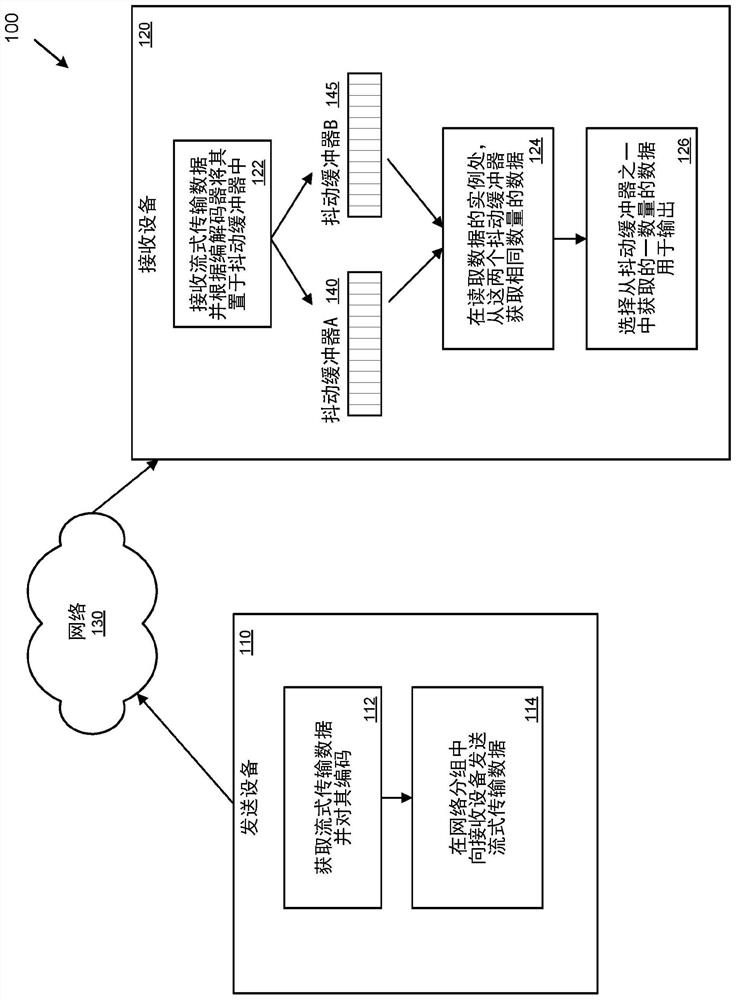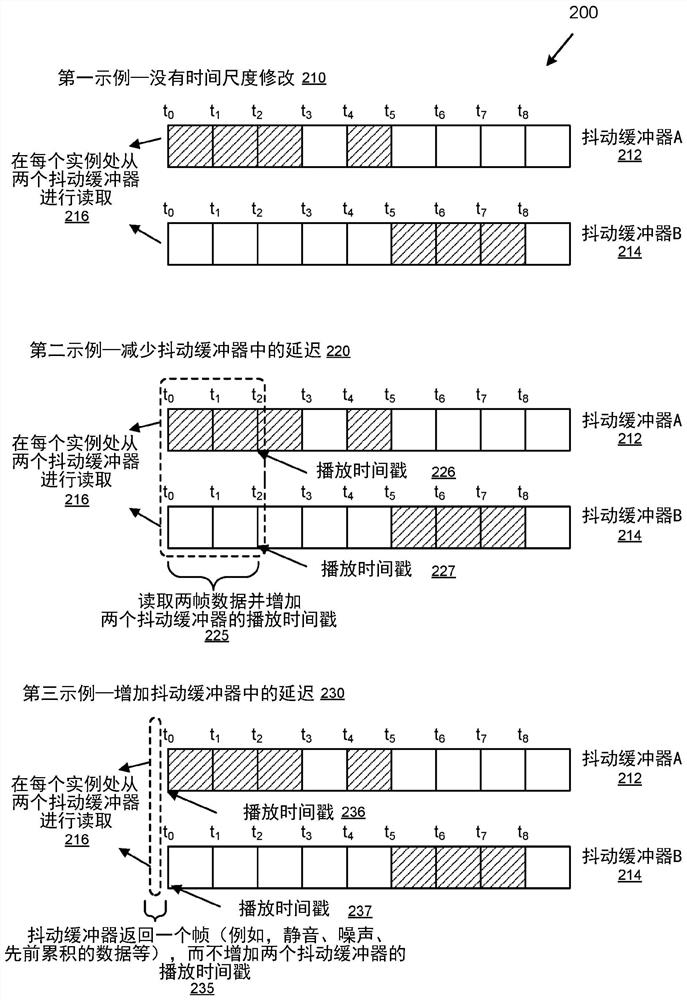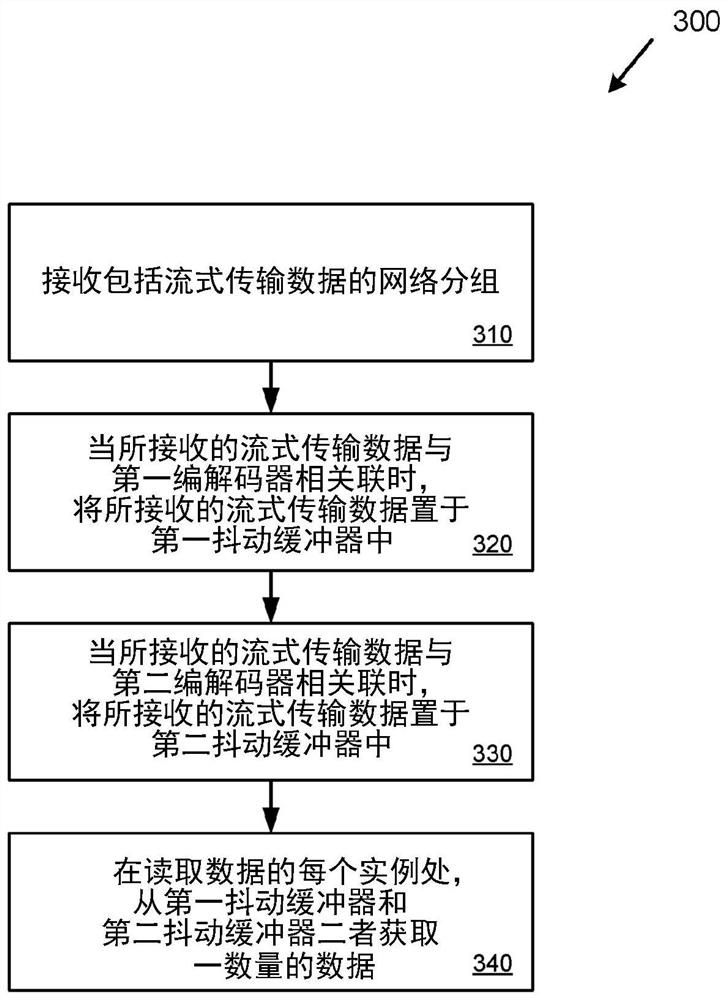Synchronized jitter buffers to handle codec switches
A technology of jitter buffer and codec, which is applied in image communication, transmission system, selective content distribution, etc., and can solve problems such as inability to handle codec switching, data loss, etc.
- Summary
- Abstract
- Description
- Claims
- Application Information
AI Technical Summary
Problems solved by technology
Method used
Image
Examples
Embodiment Construction
[0017] overview
[0018] As described herein, various techniques and solutions may be applied to manage a synchronous jitter buffer for streaming data (eg, for real-time audio and / or video communications) to support codec switching. A separate Jitter buffer. For example, when data is received in a network packet, the data is added to a jitter buffer corresponding to the codec (individual codec or codec mode) associated with the received data. When data needs to be read, the same amount of data is read from each jitter buffer. In other words, at every instance where data needs to be fetched (eg, for decoding and playback), the same amount of data is fetched (eg, read) from each jitter buffer. In addition, multiple jitter buffers use the same playback timestamps that are synchronized between multiple jitter buffers.
[0019] Jitter buffers are used to compensate for jitter in computer networks. Jitter occurs when network packets arrive with variable delays (eg, due to delay...
PUM
 Login to View More
Login to View More Abstract
Description
Claims
Application Information
 Login to View More
Login to View More - R&D
- Intellectual Property
- Life Sciences
- Materials
- Tech Scout
- Unparalleled Data Quality
- Higher Quality Content
- 60% Fewer Hallucinations
Browse by: Latest US Patents, China's latest patents, Technical Efficacy Thesaurus, Application Domain, Technology Topic, Popular Technical Reports.
© 2025 PatSnap. All rights reserved.Legal|Privacy policy|Modern Slavery Act Transparency Statement|Sitemap|About US| Contact US: help@patsnap.com



